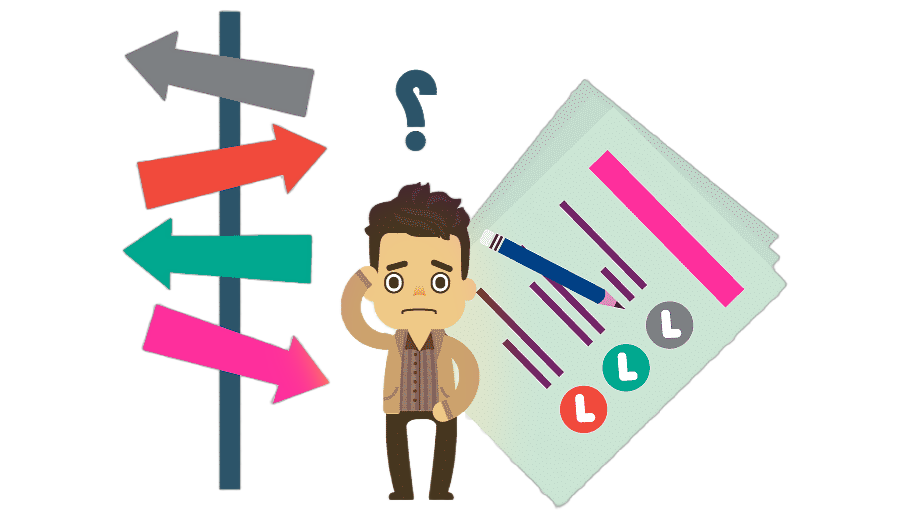In the intricate landscape of human decision-making, various approaches and processes govern how choices are made. These decision-making processes can range from methodical and analytical to intuitive and instinctual. Understanding the different types of decision-making processes can help individuals, organizations, and leaders make more informed choices and navigate the complexities of life.

Decision-making processes can vary based on the complexity and context of the decision being made.
What are the Types of Decision-Making Processes?
There are several types of decision-making processes commonly used in different situations. Here are some of the main types:
1. Rational Decision Making
The rational decision-making process is systematic and analytical.
It involves identifying the problem, gathering relevant data, defining criteria, evaluating alternatives, and selecting the best option that maximizes the desired outcome.
This approach is common in business and management, where objective assessments and logical reasoning play a crucial role.
2. Intuitive Decision Making
Contrasting with rational decision-making, intuitive decision-making relies on instincts, gut feelings, and past experiences.
Decision-makers quickly draw on their tacit knowledge and pattern recognition to make decisions in situations where time is limited or data is scarce.
This process can lead to rapid and sometimes accurate choices.
3. Incremental Decision Making
In incremental decision-making, decisions are made by making small adjustments to existing practices or strategies.
It is particularly useful in stable environments or when past decisions have been successful.
Instead of radical changes, incremental decisions build upon past experiences.
4. Heuristic Decision-Making
Heuristics are mental shortcuts that simplify complex decisions.
Decision-makers use rules of thumb, generalizations, or simple strategies to arrive at a solution quickly.
While heuristics can be efficient, they can also lead to biases and errors.
5. Group Decision Making
Group decision-making involves a collective effort where a group of individuals discusses and analyzes the decision at hand.
It can lead to more diverse perspectives and creative solutions but may also be slower and more prone to conflicts.
6. Consensus Decision Making
In consensus decision-making, all participants must agree on the final decision.
This approach aims to ensure that everyone’s opinions and concerns are considered, leading to increased commitment to the chosen course of action.
7. Autocratic Decision Making
In this approach, a single individual, often a leader or manager, makes decisions without consulting others.
It can be efficient in emergencies or when quick action is required, but it may not consider diverse viewpoints.
8. Democratic Decision Making
Similar to group decision-making, decisions are made through voting or consensus among a larger group of stakeholders.
It promotes inclusivity and participation but can be time-consuming.
9. Participative Decision Making
This approach involves involving relevant stakeholders in the decision-making process.
The decision-maker seeks input, feedback, and suggestions from others before making the final call.
10. Bounded Rationality
Coined by Herbert Simon, this theory suggests that decision-makers often make decisions that are “good enough” rather than striving for the optimal choice.
They have limited cognitive abilities and time to process all available information.
11. Mixed-Scan Decision Making
A combination of rational and intuitive decision-making processes.
The decision-maker conducts a rational analysis but also considers intuitive insights before reaching a conclusion.
12. Game Theory
Game theory involves understanding decisions based on the interplay of choices made by other individuals or entities.

It is often used in economics, political science, and business to analyze strategic interactions and potential outcomes.
13. Behavioral Economics
Behavioral economics combines principles from psychology and economics to understand how psychological biases and cognitive limitations influence decision-making.
By recognizing these biases, decision-makers can improve their choices and outcomes.
14. Satisficing
Herbert Simon also introduced the concept of satisficing, where decision-makers seek the first option that satisfies their minimum criteria rather than pursuing the optimal solution.
It is a practical approach when faced with limited time and resources.
15. Vroom-Yetton Decision Model
Developed by Victor Vroom and Phillip Yetton, this model offers a decision tree approach that helps leaders determine whether to make decisions individually, consult with others, or delegate decision-making to a group.
16. Prospect Theory
Prospect theory, proposed by Daniel Kahneman and Amos Tversky, suggests that people’s decisions are influenced by perceived gains and losses rather than absolute outcomes.
It helps explain risk aversion and preferences in decision-making.
17. Six Thinking Hats
Devised by Edward de Bono, this approach involves assigning different “hats” to participants, each representing a different perspective (e.g., facts, emotions, creativity) to encourage comprehensive exploration of a decision’s facets.
Conclusion
As diverse as the human mind itself, the multitude of decision-making processes offers a rich tapestry of methodologies for tackling life’s challenges.
Each approach comes with its strengths and limitations, making them suited for specific contexts.
Understanding these different types of decision-making processes empowers individuals and organizations to make wiser choices, navigate uncertainties, and achieve more successful outcomes in an ever-changing world.

